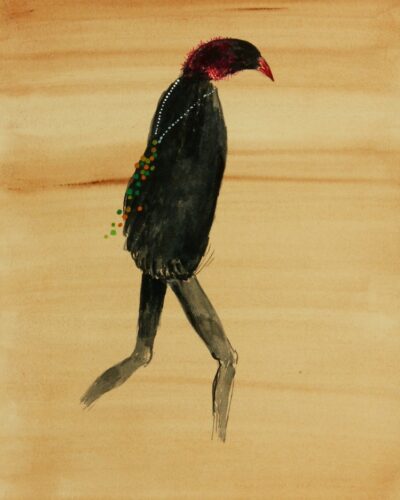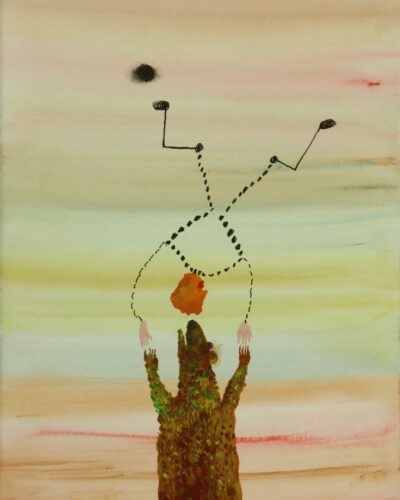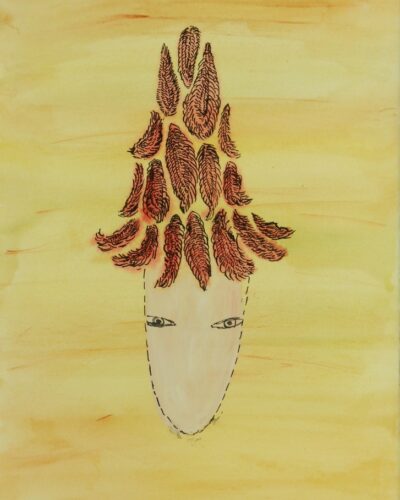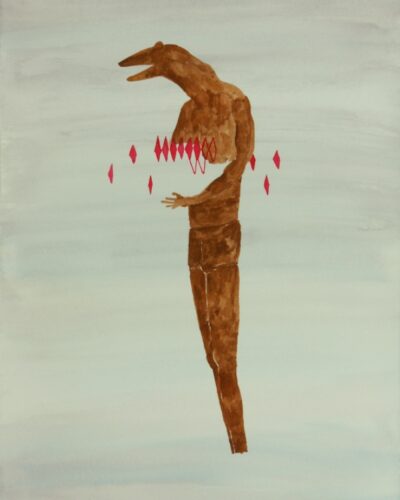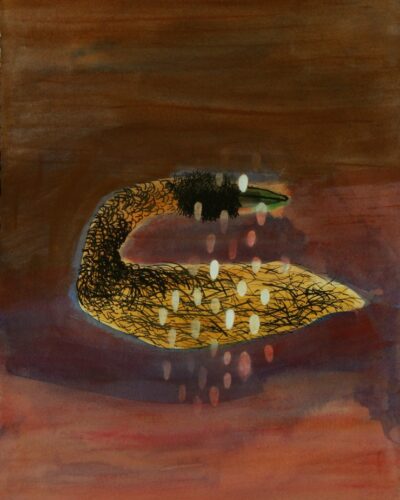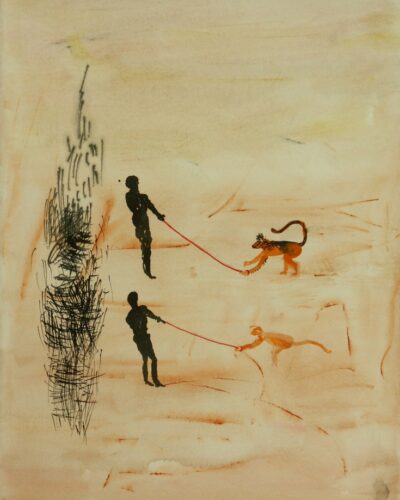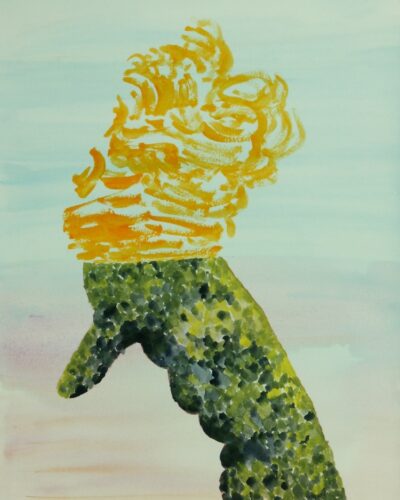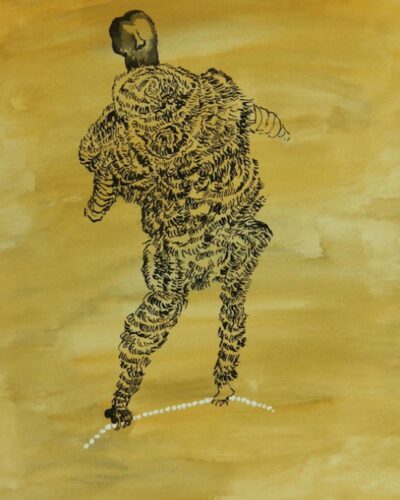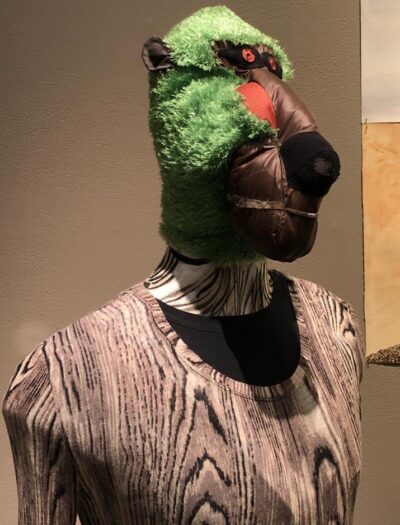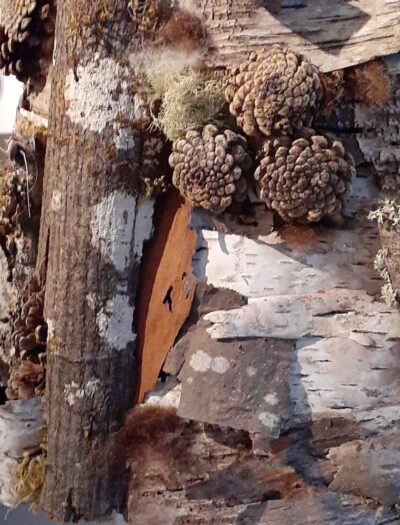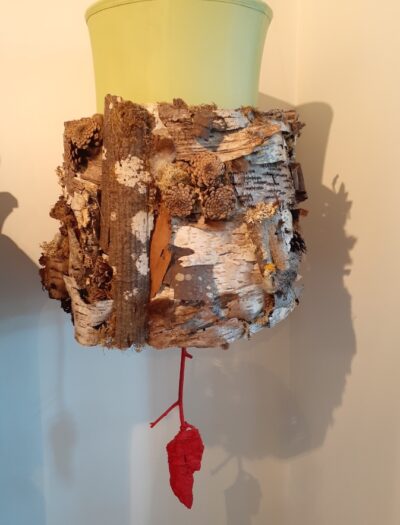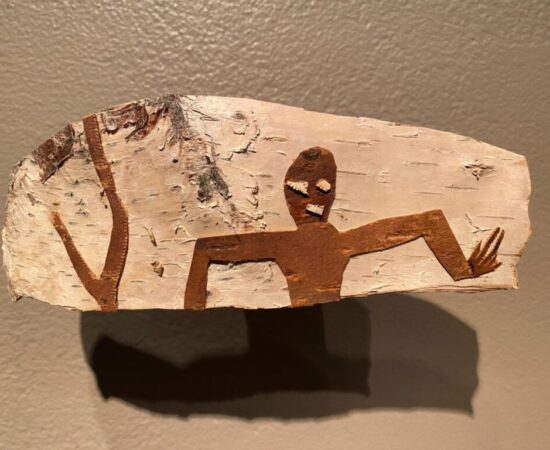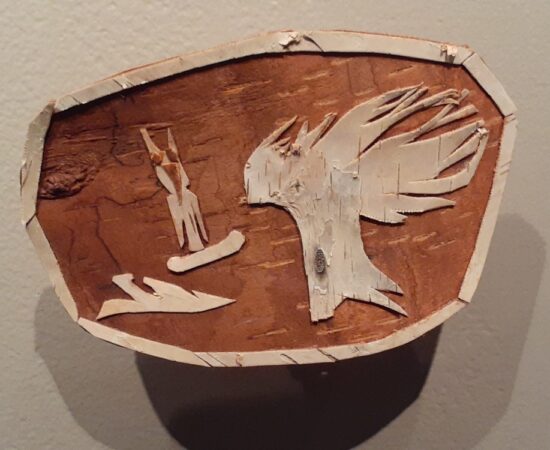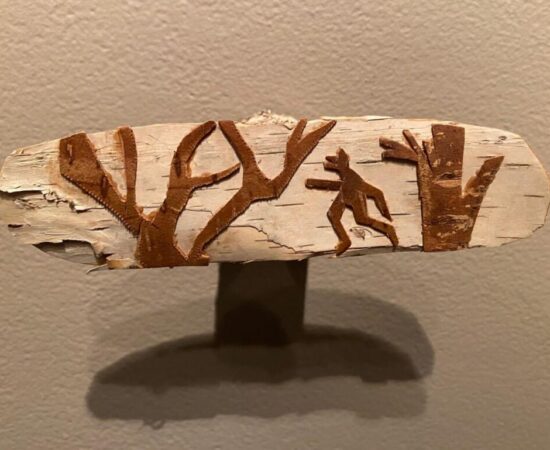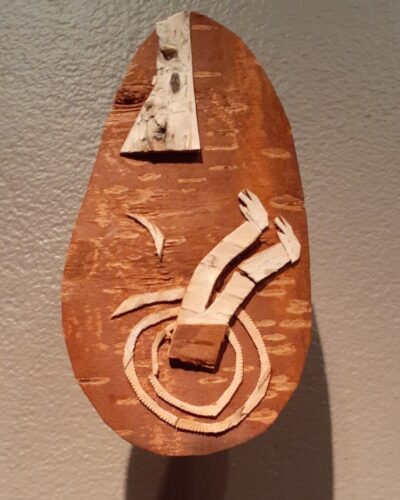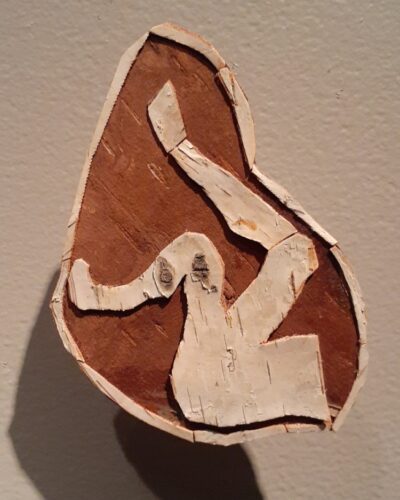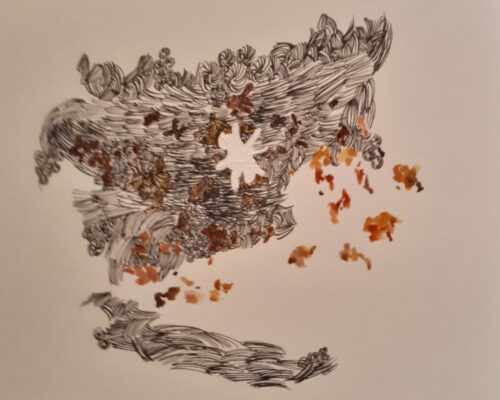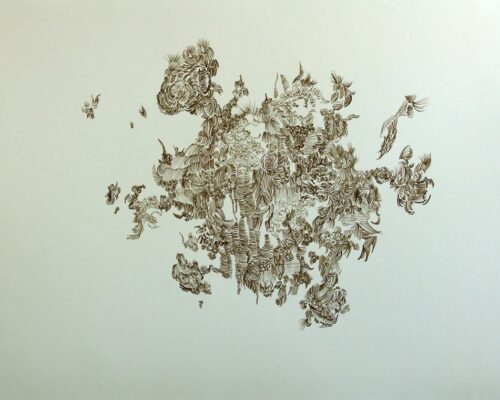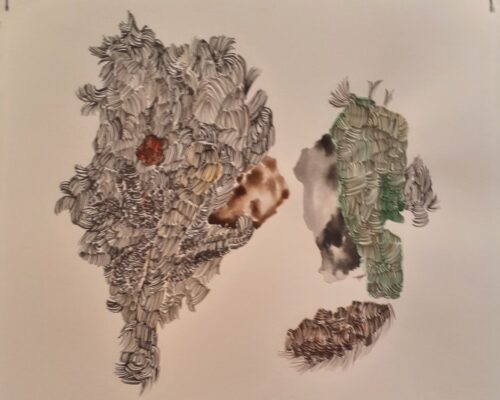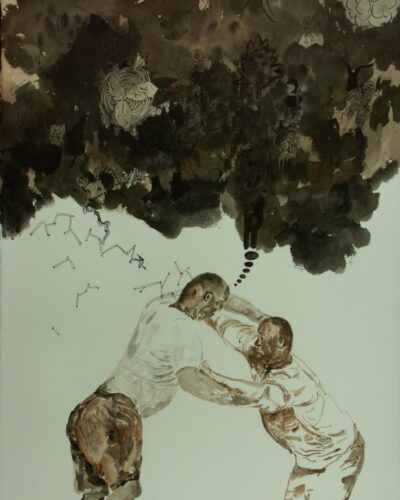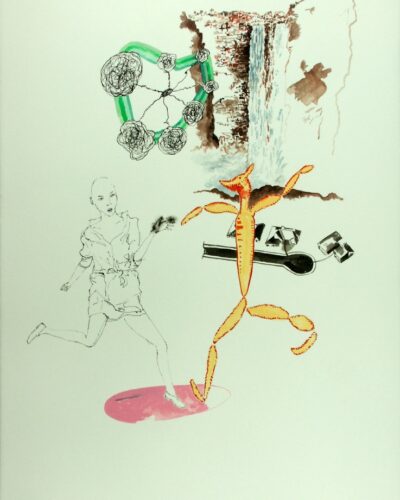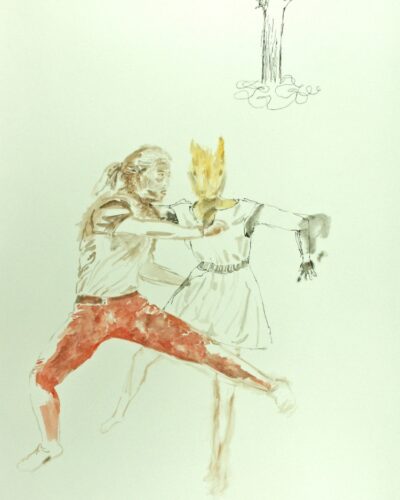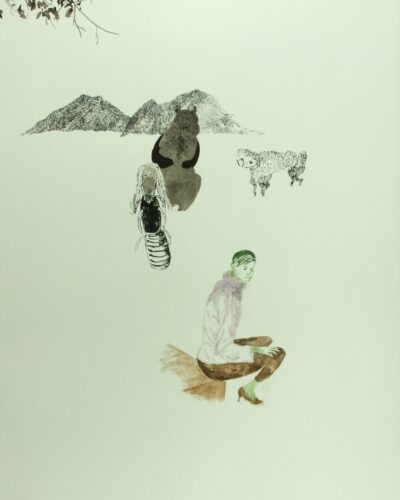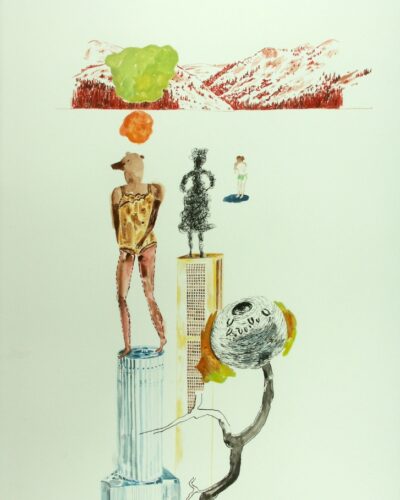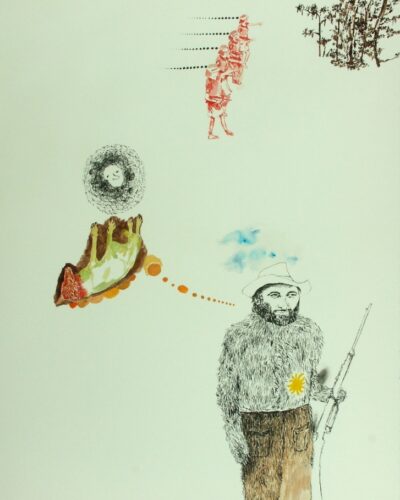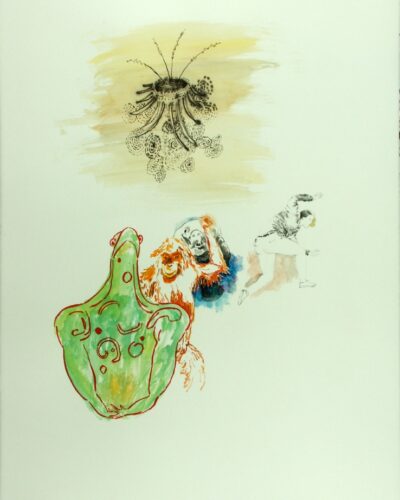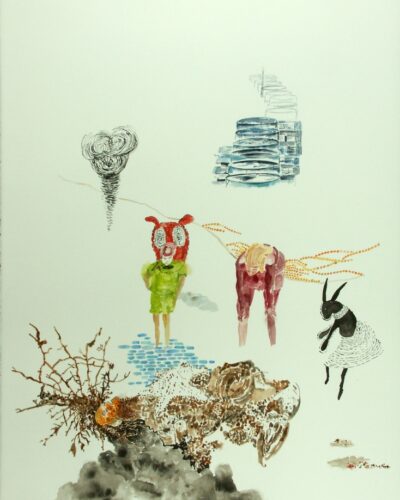
Baboon Man with One and the Same
A Tangled Thicket – Lesley Garratt
In the larger body of my work, I have been exploring the connections between humanity’s approaches to the world and that which operates within a relatively basic and natural existence. The division between the two seems to widen with humanity’s progress and development.
Through the art making process, I am attempting to narrow the gap while examining the parallels from a socio-political and psychological viewpoint.
Often surreal characters exist in my art to enact narratives suggestive of universal issues like environmental realities, philosophical beliefs and human curiosities. The hybridism present in my work draws inspiration from mythology and folklore and is not intended to anthropomorphize but more to illustrate ‘sameness’. The poet Alice Oswald suggests the importance of seeing the human as continuous with the natural world counteracting the attitude of holding dominion over all.
Drawing is fundamental to my visual practice but I continue to expand my repertoire using a variety of media such as gouache, acrylic, inks, conte, graphite, found materials, photos and natural objects to explore new techniques, ideas and concepts.
Over all, the development of conceptual content through symbolism and metaphor, representation and abstraction, enables me to explore the interconnectedness of my emotional life, the human condition and the natural world.
One and the Same
In One and the Same, Lesley Garratt alludes to the fundamental reality that all species share in, suggesting a connectivity between human bodies, animals, plants, and other lifeforms in a space of common playfulness. The nearby Baboon Man and Forest Pendulum sculptures, included alongside the installation, act as other rhetorical figures in the strange equilibrium Garratt depicts in her paintings, suggestive of a drive to find balance between the human and more-than-human worlds.
Baboon Man and Forest Pendulum
The creation of this baboon-man hybrid has developed as a direct result of my reflection on the findings of neuroscientist Dr Robert Sapolsky in the YouTube video, Why hierarchy creates a destructive force within the human psyche.
Even though the alpha male is normally a fixture in baboon society, a troop being studied, changed it’s hierarchical structure in one generation to favour altruism and social affiliation over aggression.
Forest Pendulum
With a vigilant stance and steadfast gaze
It hangs in the balance of the forest ways
It speaks to the present and rhythms to come
This voice of the forest pendulum
That Feeling
Lesley Garratt’s installation of birchbark sculptures draws from her early experiences in the wilderness of Northern Ontario. Each individual sculpture evokes a sensory memory that may be traced to Garratt’s time in this locale. The use of hybrid creatures, which features in other works by Garratt in this exhibition, is suggestive of the deeper, more sensual connection with the natural world that the medium of birchbark offers to the artist.
photo courtesy of Pardeep Singh, Surrey Art Gallery
Forming Thickets
In these pen drawings on paper, individual lines are transformed into organic structures that evoke patterns that can be found on the inside and outside of animal bodies, plants, and mineral formations.
photo courtesy of Pardeep Singh, Surrey Art Gallery
Telling Narratives
Lesley Garratt’s mixed media paintings and sculptures are a surreal, irreverent survey of humanity’s often distorted relationship with the lifeforms we share a planet with. In this installation, Telling Narratives, Garratt portrays a series of seeming metaphors, caricatures, and myths about humanity’s struggles to categorize and control the natural world. Each painting alludes to the distance between “nature” and the socioeconomic and political systems our species has devised to control it, all the while playfully hinting at the mutual breaking down of this distance in the form of hybrid creatures.
Caricatures of the Senses (right)
Our senses are pathways to our minds and they allow us to perceive the world around us. All sentient beings have this in common. ‘Umwelt’ is a term coined by the German biologist Jacob von Uexkull in 1934 that explains this phenomenon. These drawings are ink brush visualizations of shapes and images conjured from my thoughts about the senses and what they might look like on paper.
photo courtesy of Pardeep Singh, Surrey Art Gallery
I followed the advice of water
These conte drawings do not depict a real location, but instead invoke the fluid, ever changing nature of water as imagined by the artist. The title of the work references a line by the English poet Alice Oswald, who points to the continuity between human and “natural” worlds.
2 Works Installation View

